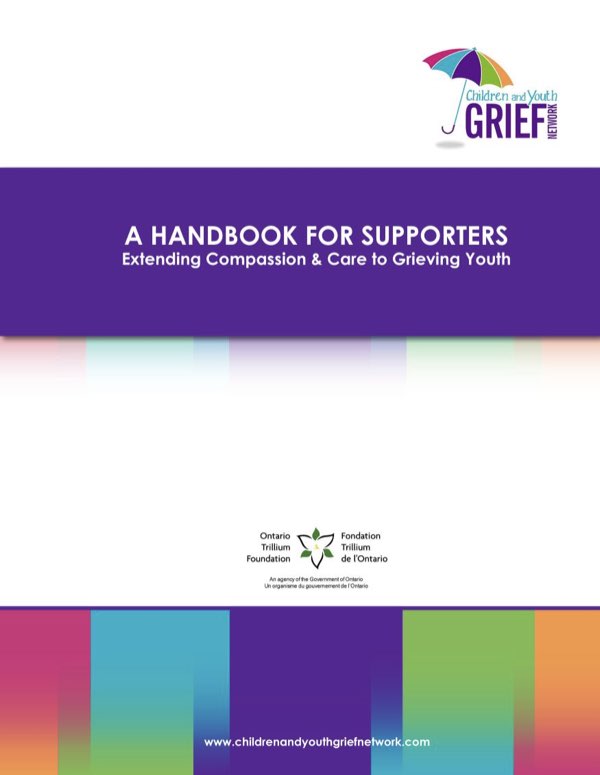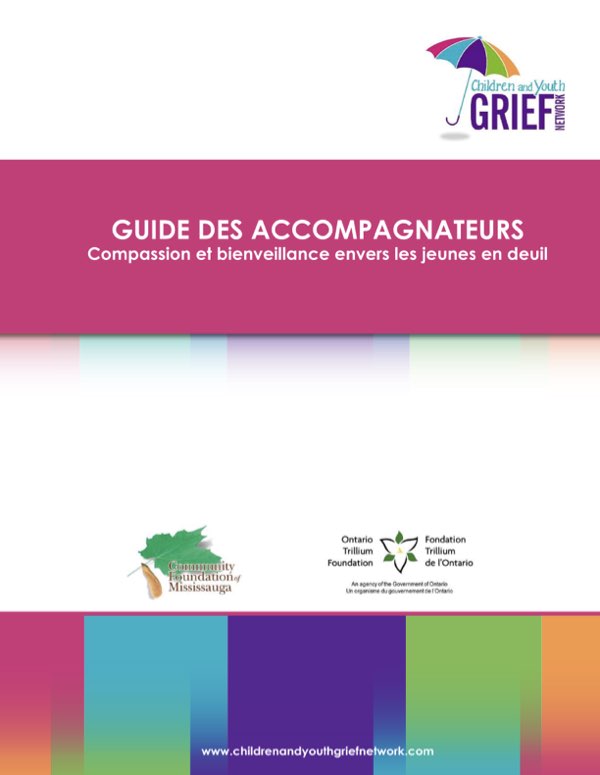HANDBOOKS FOR PERSONS SUPPORTING CHILDREN AND YOUTH GRIEVING THE DYING OR DEATH OF A LOVED ONE
Death and dying are not familiar or comfortable conversations for most people. These resources were developed understanding this, and the reality that, children, youth and families receive the majority of their support from aninformal network of people (family, friends, colleagues, faith institutions) and professionals (i.e., teachers, educational assistants, doctors, nurses, mental health professionals) who are involved in their day to day lives. As a supporter, you play a very important role in the life of these children and families – the work you do will not only serve them in their grief but will help them to cope with other challenges that they might face in their lives. These resources were created to support you in your work and these conversations. They were created to thank you for yourwillingness to be present and offer support through their suffering. Please contact This email address is being protected from spambots. You need JavaScript enabled to view it. for a PDF. Please identify language required.
GRIEF AND DEATH EDUCATION TOOLKIT FOR EDUCATOR
Feeling comfortable expressing emotion and talking about grief and the person who has died is an important part of healing and wellness after a death. This resource was created to help inspire honest conversations about the natural cycle of illness, dying and death and help identify ways to integrate these conversations into education.
This Toolkit is an initiative is to help educators feel more comfortable addressing concepts of death and grief within the school setting. It includes an outline of death education, lesson plans, tip sheets, and resource lists that compliment Ontario curriculum standards for grades 4-10. Please contact This email address is being protected from spambots. You need JavaScript enabled to view it. for a PDF. Please identify language required.


SUPPORTING GRIEVING STUDENTS IN SCHOOL AND CLASSROOM
This is a series of six short videos created to support educators and school communities in understanding and recognizing grief in children and build compassion environments within their classroom and school communities that will shape the life, story and experience of grieving children and youth.




